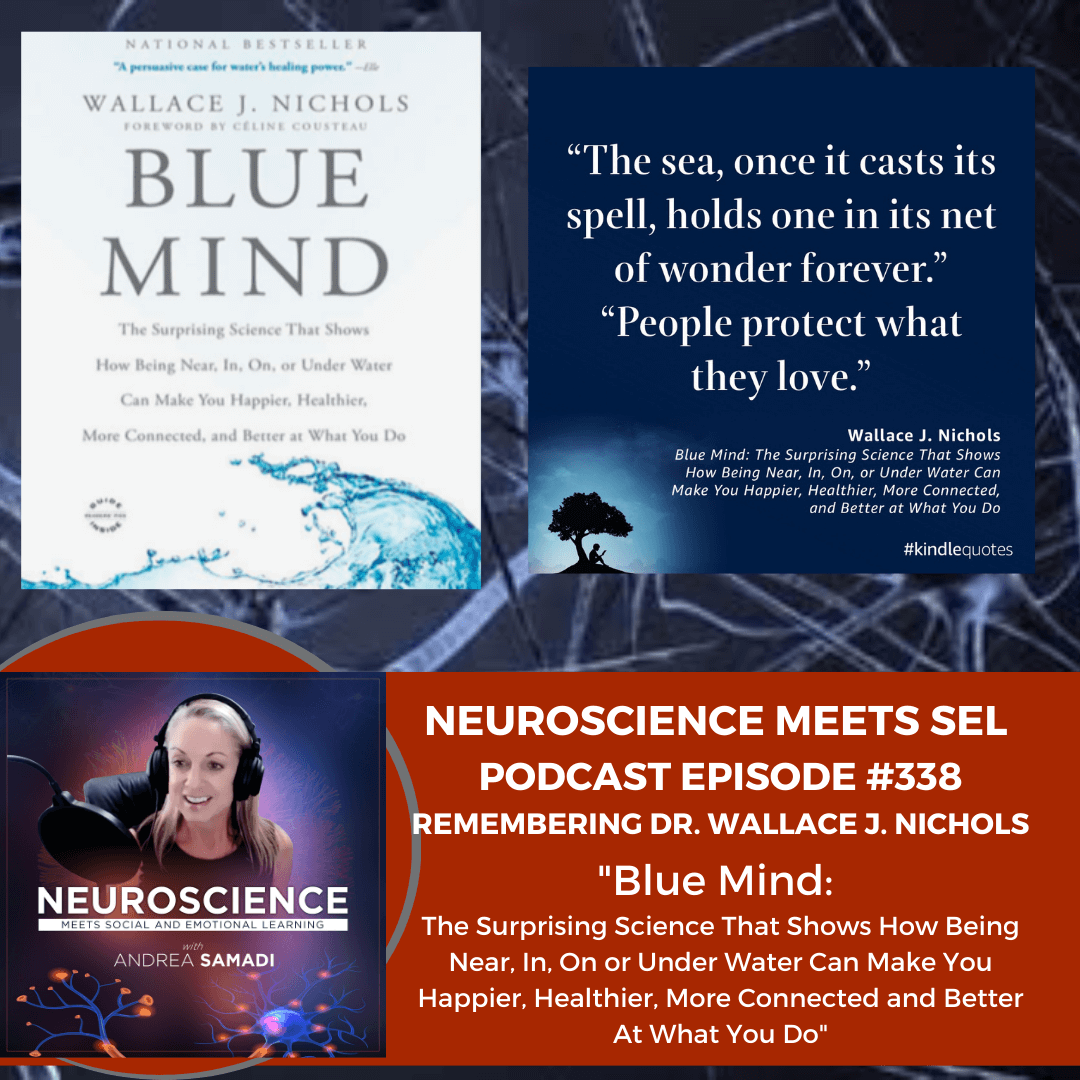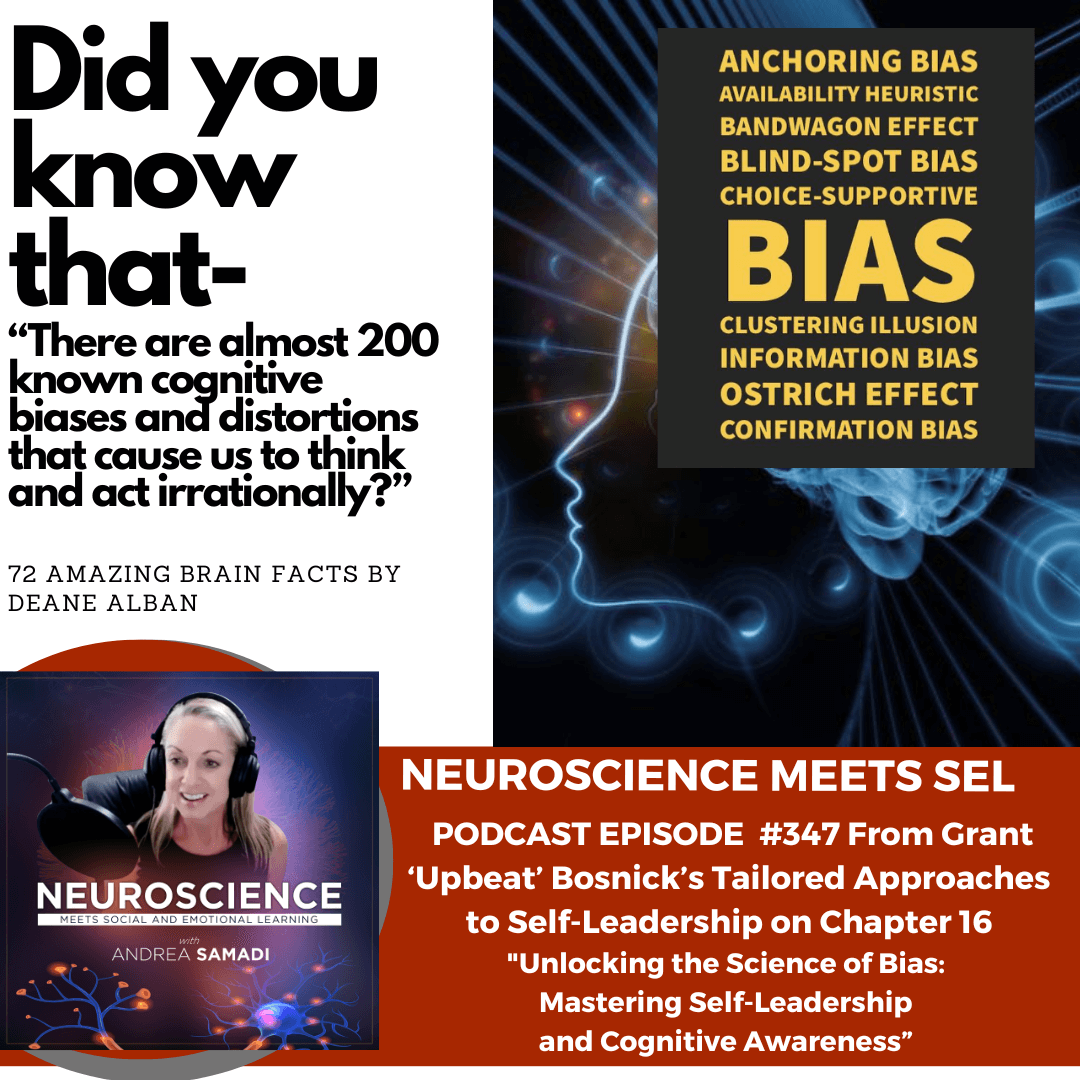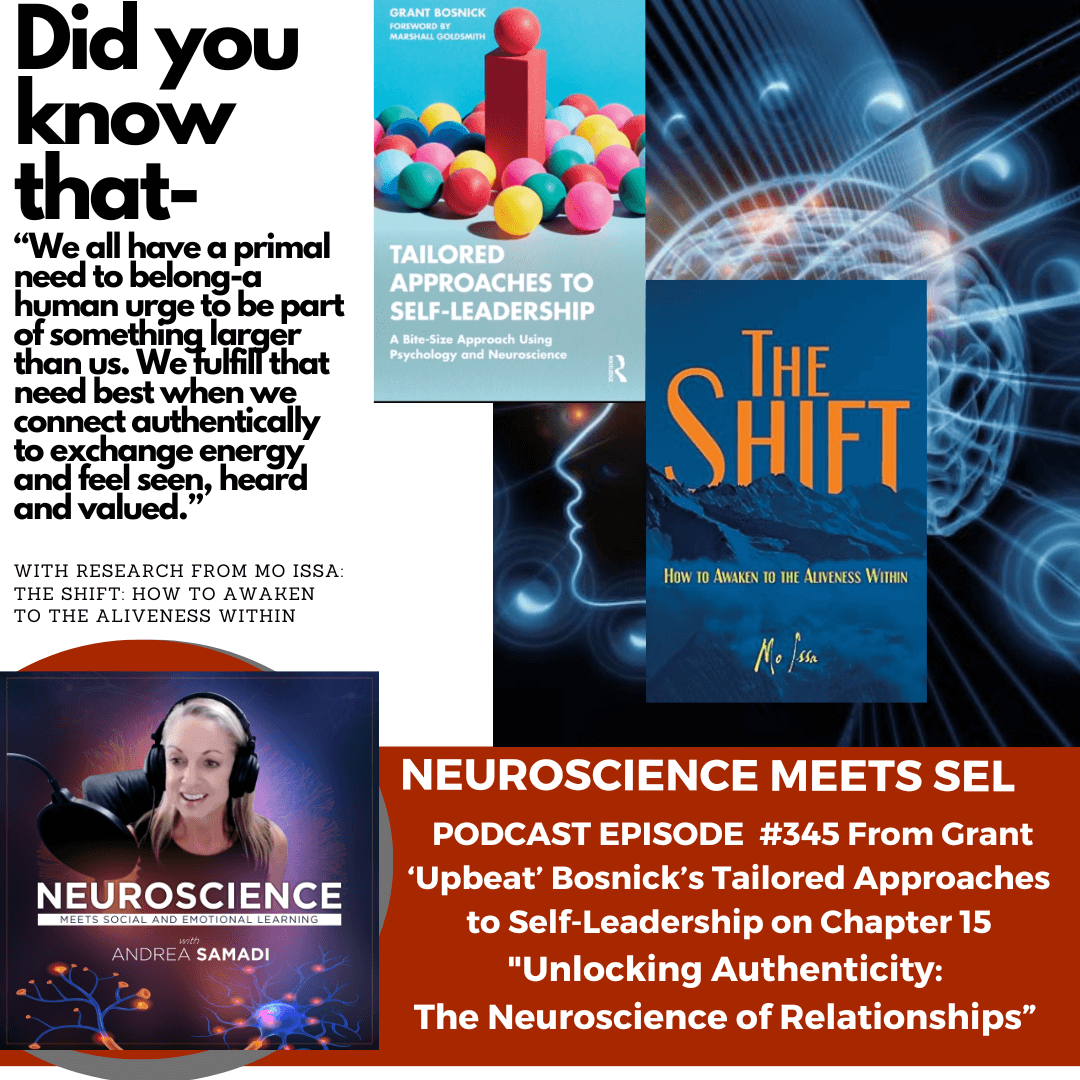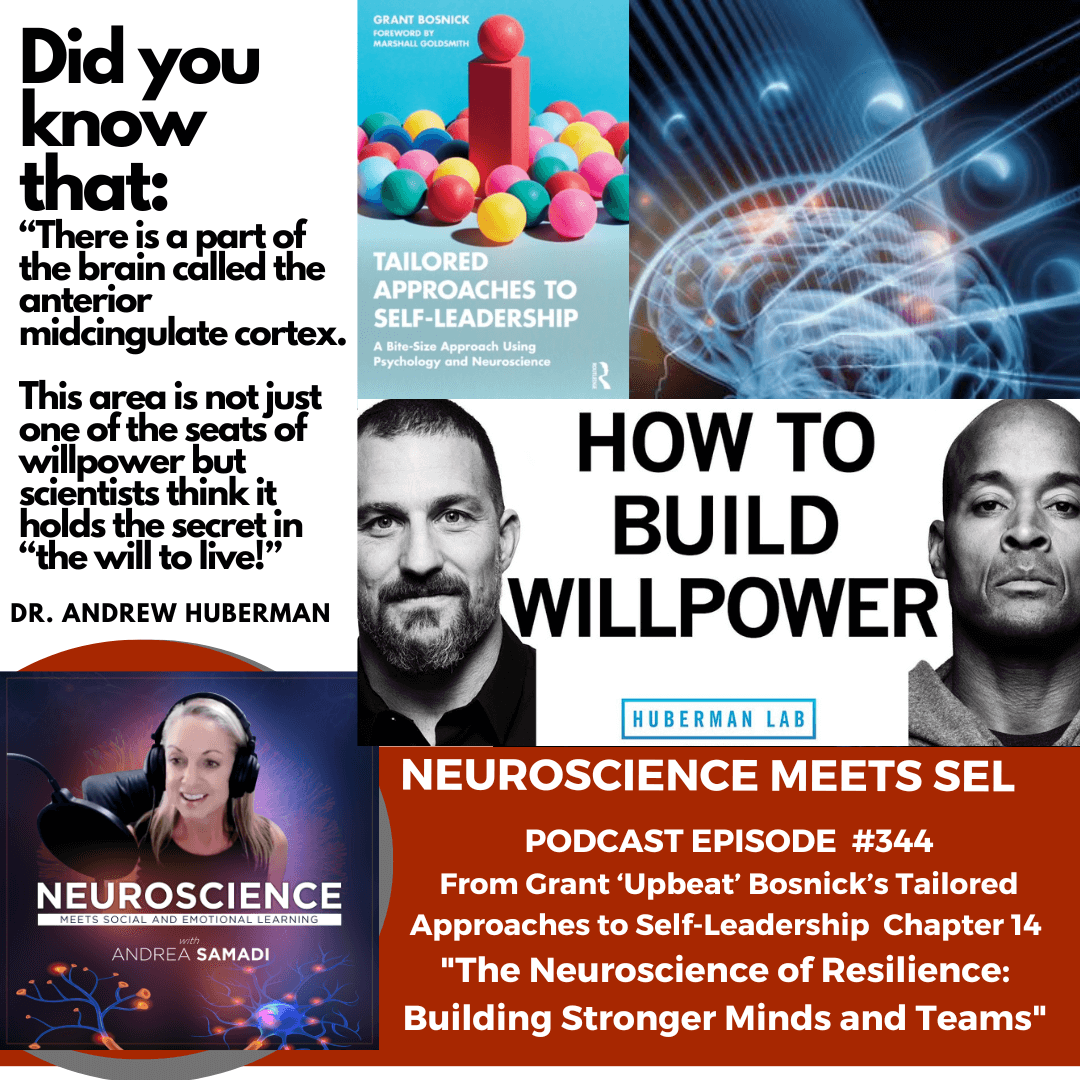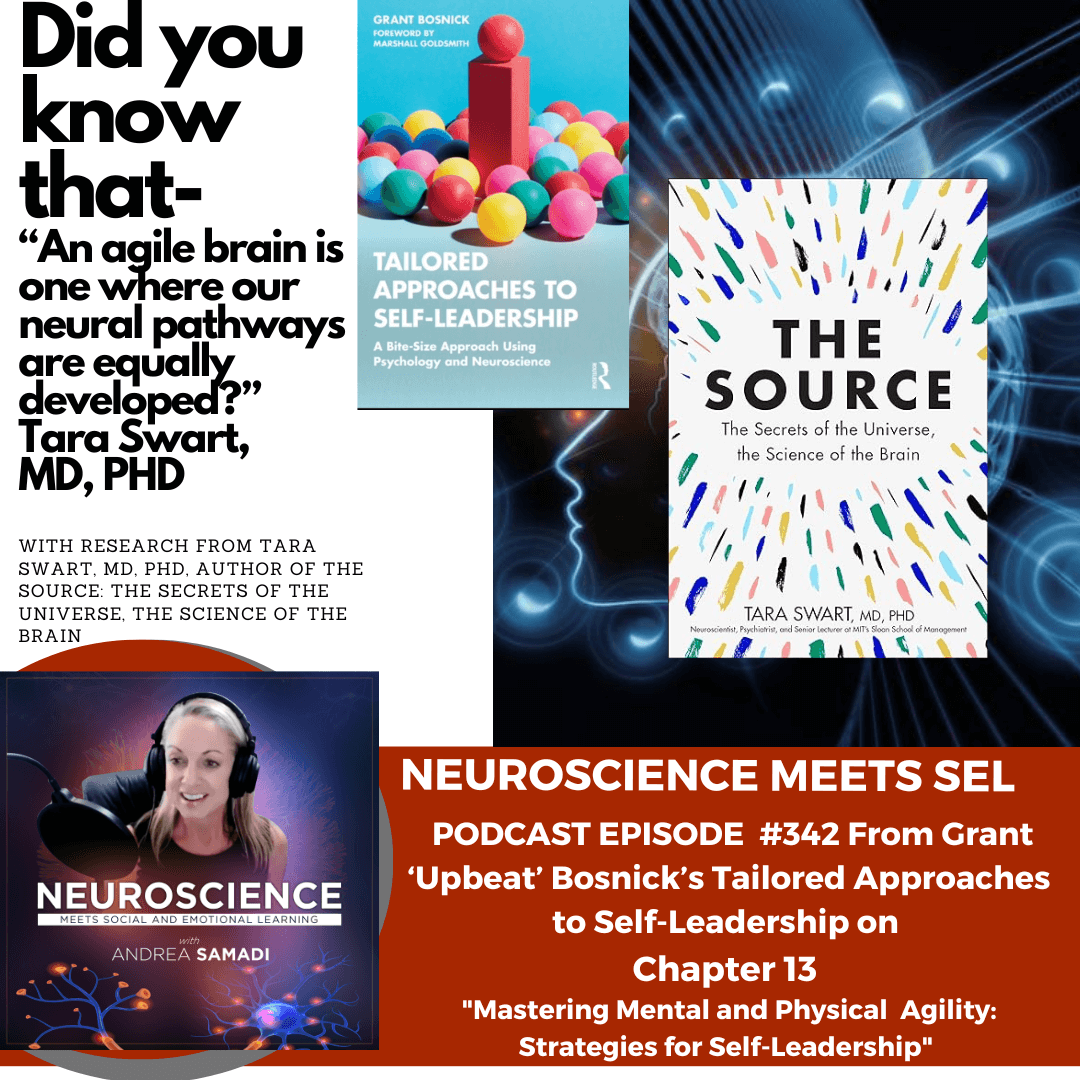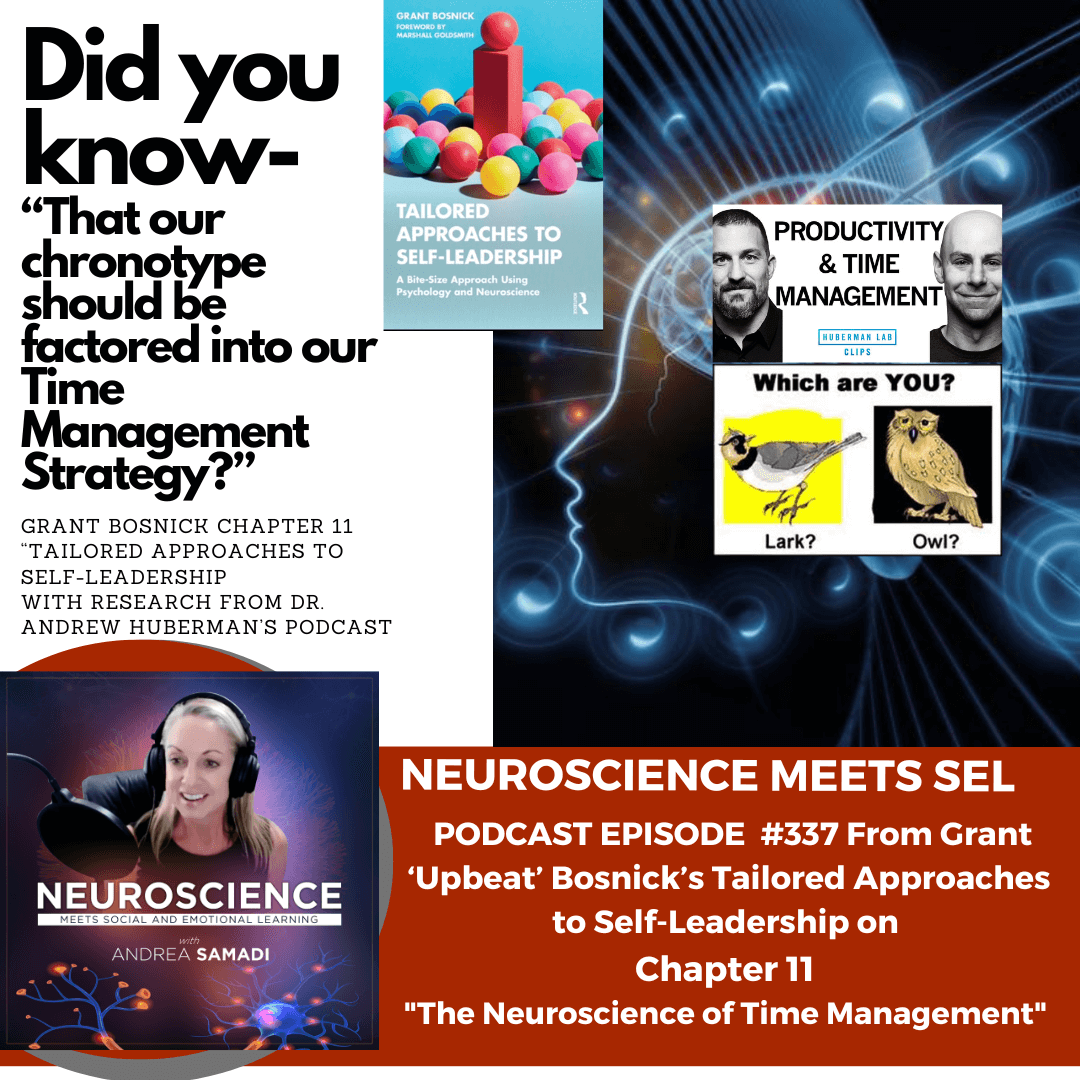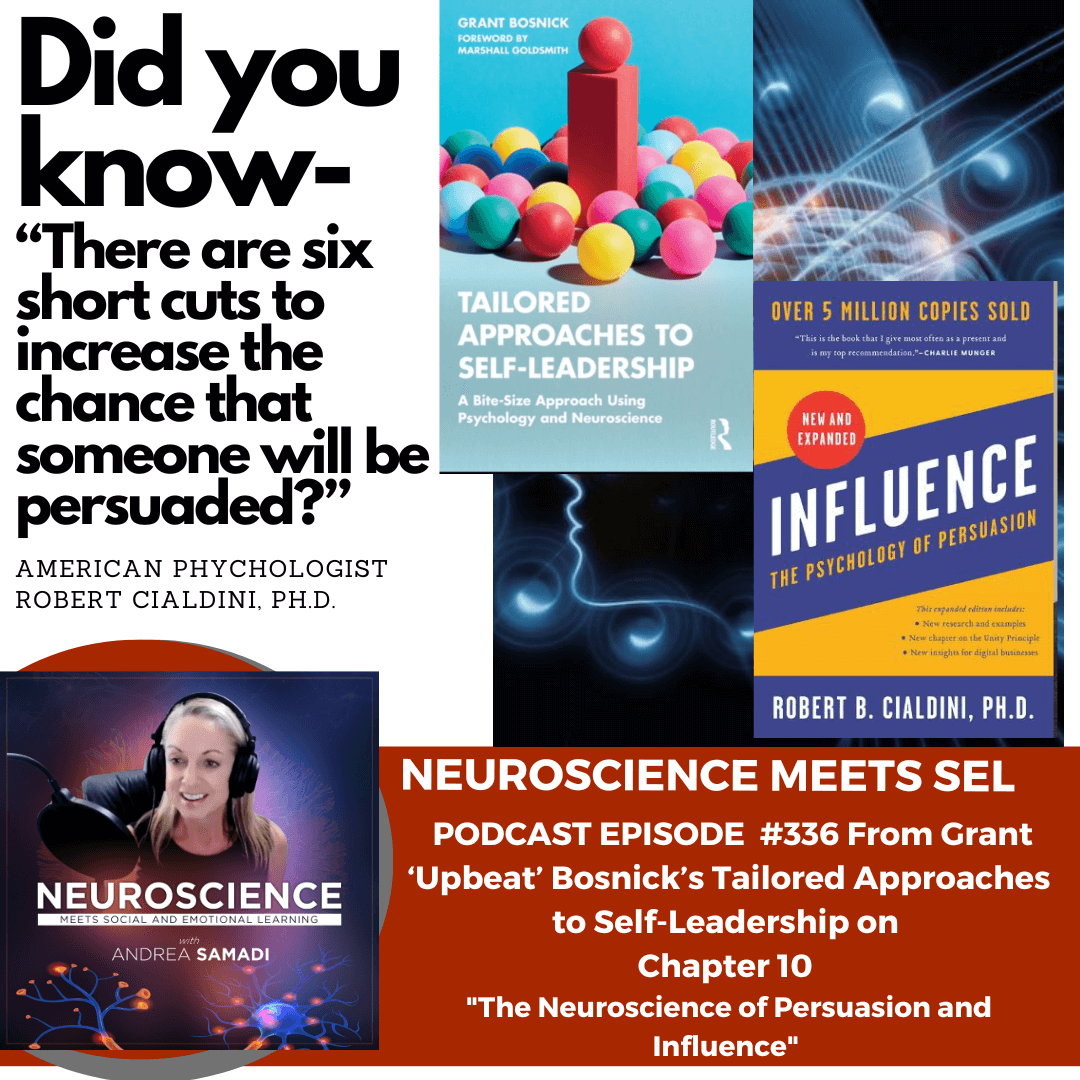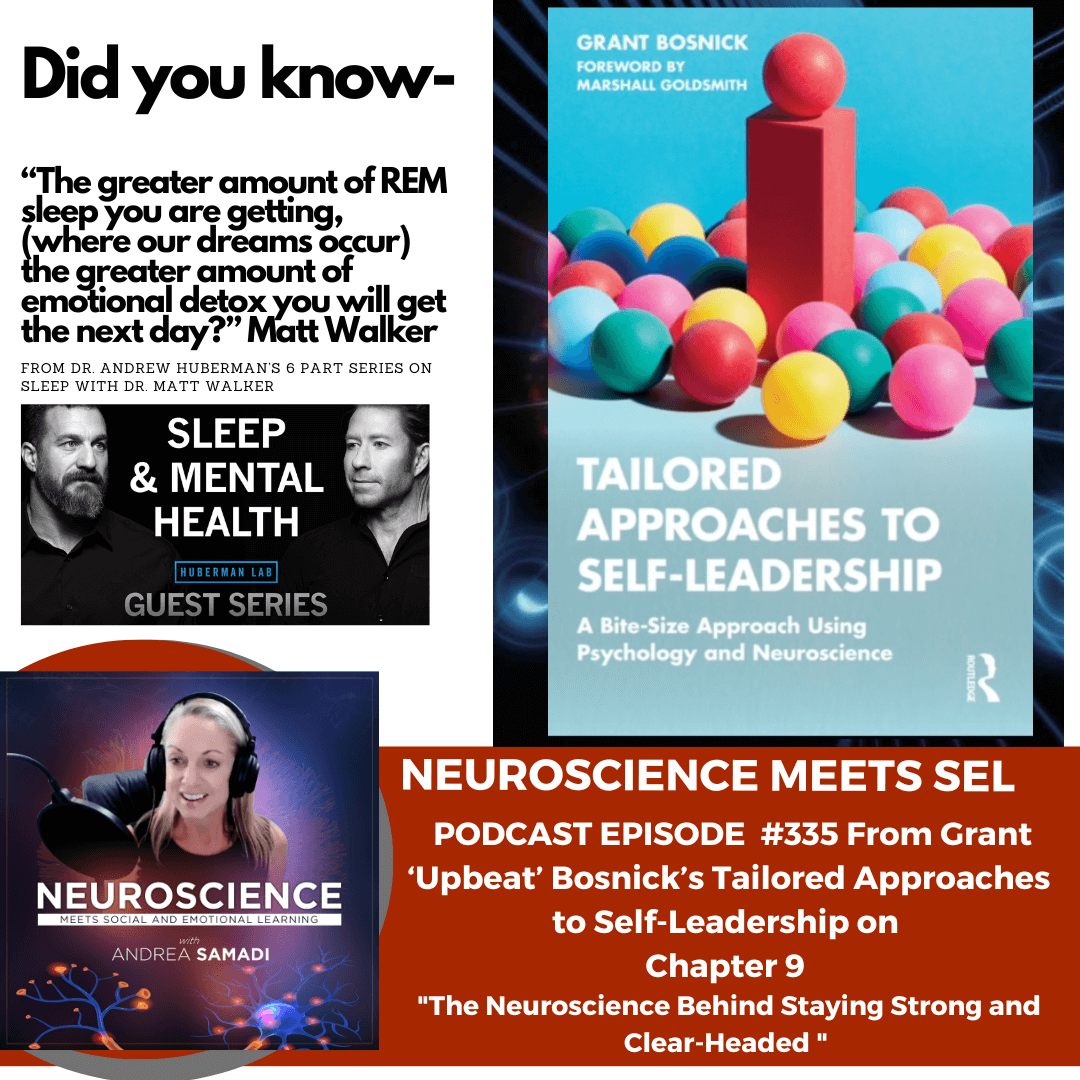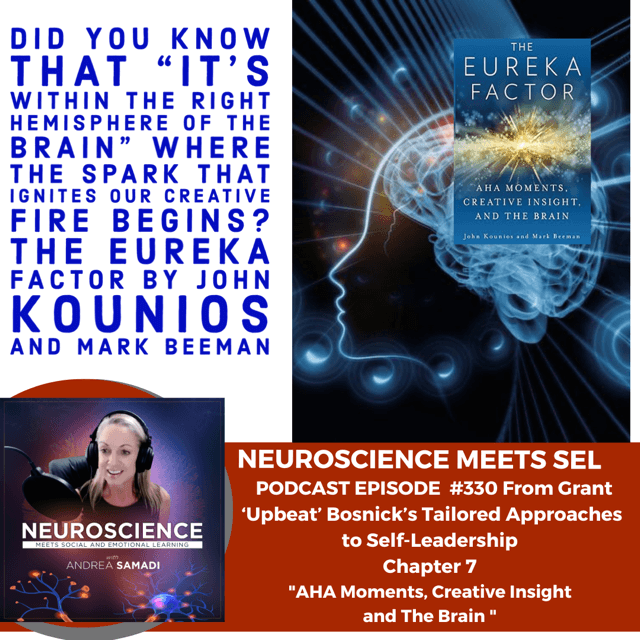Remembering Dr. Wallace J Nichols: Blue Mind: Exploring the Water-Brain Connection
Description
In this episode of the Neuroscience Meets Social and Emotional Learning podcast, host Andrea Samadi revisits a profound interview with Dr. Wallace J. Nichols, the author of the best-selling book "Blue Mind." Dr. Nichols delves into the fascinating connection between our brains and water, inspired by his extensive research and personal experiences.
Andrea reflects on Dr. Nichols' groundbreaking work, which explores how being near, in, on, or underwater can enhance our happiness, health, and overall well-being. This episode covers the origins of the Blue Mind theory, its scientific backing, and practical ways to apply it in daily life to combat stress, anxiety, and burnout.
As we honor Dr. Nichols' legacy, Andrea encourages listeners to practice Blue Mind, understand their personal connection to water, and extend this healing practice to others. Tune in to discover how the magical and mysterious connection to water can transform our lives.
On today's episode #338 we will revisit a previous interview #297[i] from last summer to remember the author of the best-selling book, Blue Mind, Dr. Wallace J. Nichols, who made such an impact on the world with his Blue Mind Movement, and is no longer with us today. While this is a difficult episode to write, I know it’s an important one as I could use the tips I know we are going to cover myself at the moment. I’m also sure there are others in the world who could benefit from revisiting the surprising science that shows how being near, in, on, or under water can make you happier, healthier more connected and better at what you do. I could have left this episode until a later date, even closed to World Blue Mind Day coming up July 23rd (later this month) as I stared at a blank document and the words just wouldn’t come out. Then when I finally did start writing, last month, the document was erased, so it just must not have been the right words. Or maybe this episode was meant to be written near the ocean as I’m sitting next to the Gulf of Mexico, while writing this. Or maybe even written from the point of view, of being under the water, looking around, and up, to “see” what can be felt deeply with this mysterious brain/mind connection.
Before sitting down to write this episode, I noticed sea turtles swimming around in the ocean, up close to us, and everyone mentioned how rare this was. I just kept thinking of Dr. Nichols telling me (in our interview this time last year) that he studied sea turtles for 30 years, and remembered him mentioning that he was hoping someone else more qualified (like Dr. Oliver Sachs) would write the book he wanted to write, connecting the deep mysterious ocean with the intricacies of our brain.
While revisiting our interview, I wondered:
- What else could we learn from Dr. Nichols that we might have missed the first time? You know when you read a good book twice you always see something new. This is because you’ve changed since the first time, and you bring new experiences with you. I wonder what doors this second look would open for all of us?
How can I improve my own Blue Mind Practice? Dr. Nichols mentioned that even if we are doing ok, practicing Blue Mind could still help us, but for those people who are in Red Mind (feeling anxious) this practice could save your life. It’s another tool to add to our tool kit to prevent us from reaching Grey Mind (or Burn out).
How can revisiting this episode help others close to me (starting with my own family) helping them to practice Blue Mind in our daily lives? Also not being afraid of the hardest science in the room (our emotions) and keep talking openly about our feelings, and to not be afraid to reach out to others if we feel Red Mind or anxious thoughts.
How can we highlight Dr. Nichols’ work so that we ALL can do what he suggests we do, by finding “our water, pay attention to how it feels and then take someone else with you” to experience the deep mysteries felt with this Blue Mind that’s backed by science.
Knowing our first interview was an important one, I watched the YouTube[ii] version for the third time this week, writing more notes on top of previous notes, to see if I could dig deeper into the meaning of the words of wisdom covered in our first interview.
Let’s go back and revisit this important interview with marine biologist and author, Dr. Wallace J Nichols, to see if we can take our own practice of Blue Mind, to the next level.
We opened up our interview when I recalled standing next to the bluest water I have ever seen in Turks and Caicos, last summer, 2023, just prior to our interview. I remember our bags were packed, and we were just leaving our hotel to return home, when I was introduced to Dr. Nichols, (via email) after experiencing some of the most “magical” memories that our family has ever felt, near the water. Dr. Nichols recalls those turquoise waters, saying he “knew them well” and we would return home as a family, not knowing we would ALL need Dr. Nichols’ Blue Mind Theory later this summer ourselves. It’s all easy to see these things looking backwards, but the dots had not connected forward yet, like Steve Jobs’ famous Stanford Commencement Speech.[iii]
I knew this was an important interview. For myself, as well as for others.
INTRO: We open up this interview with my introduction about Dr. Nichols, and how the foreword to his book, Blue Mind, was written by Celine Cousteau, one of the daughters of the great Jacques Cousteau who wrestles with explaining the “awe and wonder” of our oceans and waterways. She says “should we leave it, or dive in and explain it?” Jacques Cousteau would dive in, so she decides to do the same and says “it’s about reconnecting our sense of self and soul with our waterways and oceans. It’s about finding creativity, clarity, and confidence in our deep Blue Minds.” (Celine Cousteau) Next, I ask Dr. Nichols to share some of the meaning behind Celine Cousteau’s words in the Foreword, and he shared that she connected her background in psychology to her words.
Then I ask Dr. Nichols about how he made the brain/water connection and I loved his answer. He was hoping that someone else would publish Blue Mind. He searched all over the place for this book, Your Brain on Water, and pitched this book idea to Dr. Oliver Sachs, and he was told over and over again, that this is your book to write.
I understood why he kept looking for this book, from my point of view. I’m a former teacher, from Toronto, trying to make sense of how our brain impacts our future results, specifically as it relates to learning. I remember writing the idea of this podcast down, connecting Neuroscience to Social and Emotional Learning and almost hid this idea from others in the beginning. I’m not a neuroscientist, or anything –ist. But there was a time when I was told, just like Dr. Nichols, “you need to make the neuroscience/education connection” (and was handed a ton of books to read). I remember thinking “this is too hard for me” but I did it anyway. I was determined to learn more about our brain and learning, and paid people smarter than me to explain the concepts I couldn’t grasp. Slowly but surely, I began to understand how our brain learns something new.
Which is why I was so impressed when Dr. Nichols “wrote the book” anyway, connecting the nervous system (that we are still making deeper discoveries with) to largely unexplored bodies of water, like the ocean. He connected top neuroscientists, to those who understood the mysteries within the depths of the ocean. He says himself that it took him some time, explaining to me that he’s a marine biologist, who studied sea turtles for 30 years, and I understood what he was saying. He noted “I’m not a neuropsychologist, I just came in the side door.” He did the work needed to “put this theory together, because he knew he had to do this. What he created continues to gain momentum over the years. He started a movement, The Blue Mind Movement, with this book that he knew he had to write, and proved that we ALL can make the brain/water connection to become happier, healthier, more connected, and better at what we do.
Q1: I was amazed at the research held in the pages of this book. I had to ask how he did it, and the answer just blew me away. Dr. Nichols talked about how they held Blue Mind Summits where they would connect the leading experts in neuroscience, (like neuroscientist Howard Fields) to those who used these principles in their lives around water, like pioneering top wave surfer, (Jeff Clark) or those who used this magical connection to water to overcome addiction. They were asked one question that they each would answer from their specific point of view. Like making the connection with dopamine (in our brain) and surfing, something that had never been done before.
This is where true learning begins, almost like connecting peanut butter to chocolate to create the Reece’s Peanut Butter Cup. Even though Dr. Nichols mentioned that no one would fund this idea, he just knew it had to be done, and he did it.
He mentions Dr. Dan Siegel[iv] often in Blue Mind, and looked for anyone we knew the science to help make this brain on water connection.
Sometimes I forget what questions I ask on interviews. The questions just come out of me and if you know me, I’m like this in real life. I remember someone saying that meeting me for the first time was like a job interview. I’m so curious, and I will just ask you so many questions, you’d leave our conversation wondering “why so many questions?!” I forgot that I mentioned my fascination with surfing at the north shore of Hawaii to Dr. Nichols until I re-watched our interview. Hollywo

